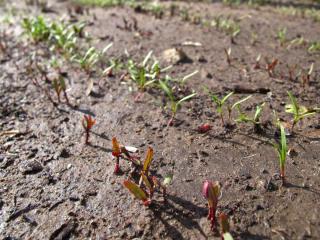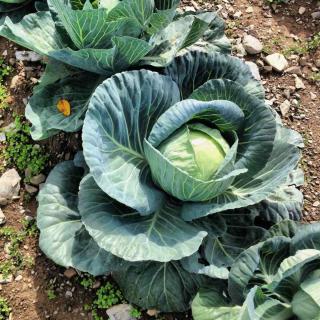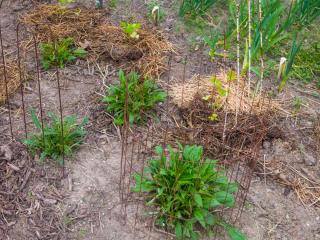

Limestone soil is clearly gets a lot of hate by gardeners. Rocky, chalky, dry, and poor, cultivating anything in such harsh conditions is indeed far from seeming easy at first glance. However, thanks to small adjustments, you will be able to enjoy a productive vegetable garden, even in alkaline soil.Read on to discover how to cultivate a vegetable garden in limestone soil.
The key sign that soil is alkaline is to look at its pH. Indeed, when the pH is between 7.5 and 8.7, you are smack in the range of alkaline soil (limestone). If this rate exceeds 8.7, the soil is then very alkaline. Limestone soil contains a lot of calcium carbonate. It consists of 10 to 30% lime carbonate, paired together with clay. Therefore, the higher the limestone content, the more alkaline the soil is.
It is relatively easy to recognize limestone soil, particularly because of the many whitish pebbles you find inside (often present on the surface). Since these are ancient seabeds, you might even find seashell fossils at times.
 In addition, limestone gives a light color to soil, and it has a light texture, with a chalky appearance. In summer, such soil dries up quickly, and even cracks. You can also recognize limestone soil by the calcareous plants that grow there naturally, such as poppies, clovers, elders, wild chicory, field mustard, etc.
In addition, limestone gives a light color to soil, and it has a light texture, with a chalky appearance. In summer, such soil dries up quickly, and even cracks. You can also recognize limestone soil by the calcareous plants that grow there naturally, such as poppies, clovers, elders, wild chicory, field mustard, etc.
A quick test is to pour a thimble full of pure vinegar on a small heap of soil: if it’s very chalky, it’ll fizz slightly, producing bubbles. However, only a pH test kit will allow you to precisely define the pH of your soil.
 Some vegetable types adapt more easily to chalky soil than others. Several plants even find this environment very beneficial! It’s especially the case for cabbage, which is much less vulnerable to cabbage hernia when in grows in limestone soil compared to more acidic soil types.
Some vegetable types adapt more easily to chalky soil than others. Several plants even find this environment very beneficial! It’s especially the case for cabbage, which is much less vulnerable to cabbage hernia when in grows in limestone soil compared to more acidic soil types.
Limestone soil does not retain water and therefore quickly dries up in summer. It also has lots of stones that hinder root development for small seedlings. Additionally, excessive limestone prevents vegetables from reaching and absorbing minerals (iron, manganese, magnesium) that are essential for growth. They then become deficient.
On the other hand, the high porosity of limestone soil provides for a well-draining environment. This means excess water quickly drains away. Alkaline soil thus prevents the development of diseases and fungi related to humidity.
It’s possible to increase the fertility of limestone soil to make gardening easier.
 Regularly enrich the soil with a constant supply of well-ripened compost. Compost will provide your vegetables with the nutrients that alkaline soil lacks.
Regularly enrich the soil with a constant supply of well-ripened compost. Compost will provide your vegetables with the nutrients that alkaline soil lacks.→ To go further: